The tradition of the Araihari Shop
By Kaitlyn Munro
 I recently travelled to Tokyo to visit family, and naturally found myself surrounded by beautiful textiles and traditions. One of my favorite museums was The Metropolitan Edo-Tokyo Museum, that tells the story of Tokyo during the Edo Period, 1603-present day.
I recently travelled to Tokyo to visit family, and naturally found myself surrounded by beautiful textiles and traditions. One of my favorite museums was The Metropolitan Edo-Tokyo Museum, that tells the story of Tokyo during the Edo Period, 1603-present day.
In the permanent exhibit, you can wander through an area of life-sized buildings that represent “munewari nagaya” or typical tenement row houses where people lived and worked. Displayed is a traditional araihari shop where kimonos were taken for cleaning and care. These shops began to appear in Japan at the beginning of the Edo period.
What exacting and time consuming work to wash a treasured kimono! First, the kimono was fully disassembled. Greater value was placed on the actual fabric, its quality, rather than the stitching or construction. These prized panels of fabric, often silk, were cleaned, re starched, mended, and reconstructed into the kimono. Long cherished – when kimonos became too worn, they were often converted into other clothing, ties, or household cloths.
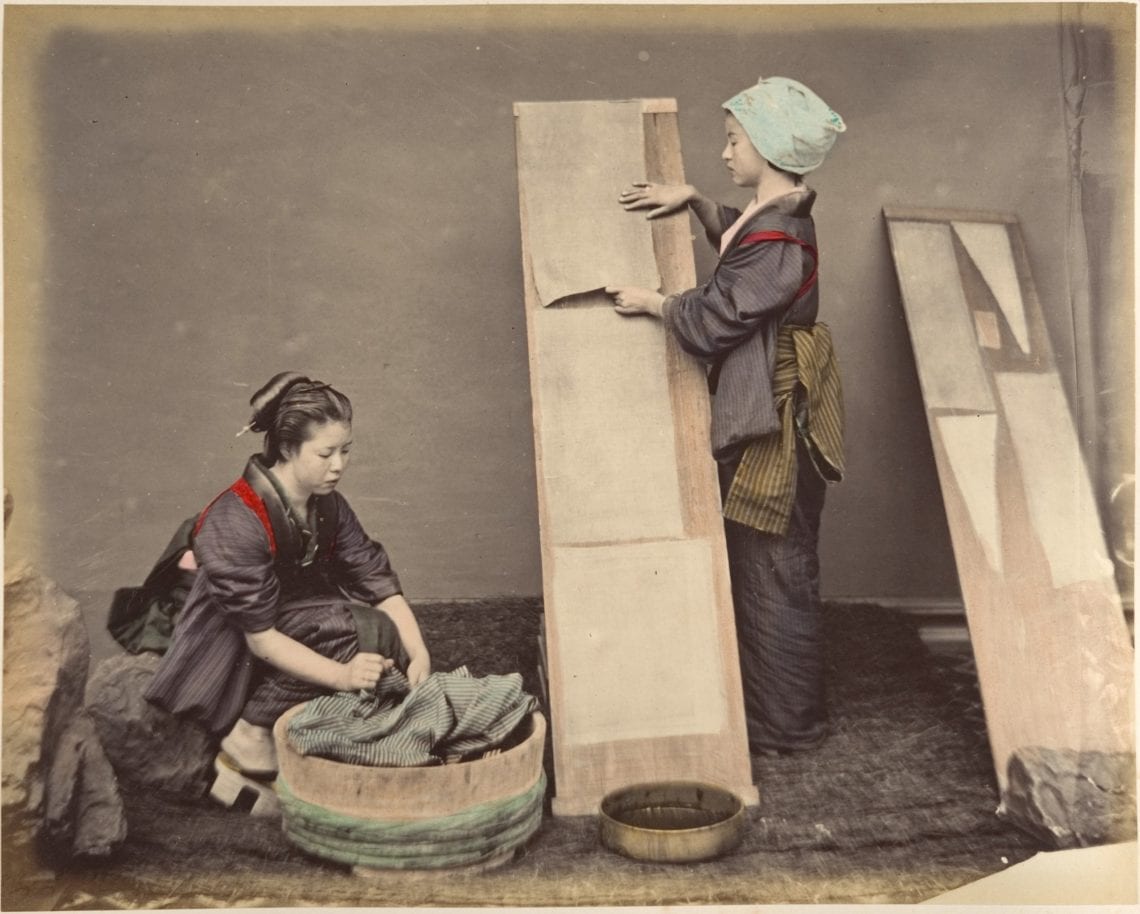
From The MET collection, “Two Japanese Women Posing with Laundry” 1870
There were two main methods of drying the kimono panels. Itabari refers to the method of cleaning, starching, and stretching or “blocking” the cloths onto wooden boards (much like painting and scroll mounting). Shinshibari is when the cloth panels are dried by hanging tensioned between two bamboo bars or shinshi. Different techniques were used for different fabrics, but the Itabari, the easier method, became more widely practiced.
- Shinshibari
- Itabari
If you ever find yourself in Tokyo, be sure to check out the Metropolitan Edo-Tokyo Museum!
Sources:
http://metmuseum.org/art/collection/search/288546?rpp=60&pg=3&ao=on&ft=japanese&pos=169
https://furugistarjapan.files.wordpress.com/2012/08/shunsho_katsukawa-no_series-stretching_out_cloth_to_dry-00028933-020219-f00.jpg
https://www.edo-tokyo-museum.or.jp/en/
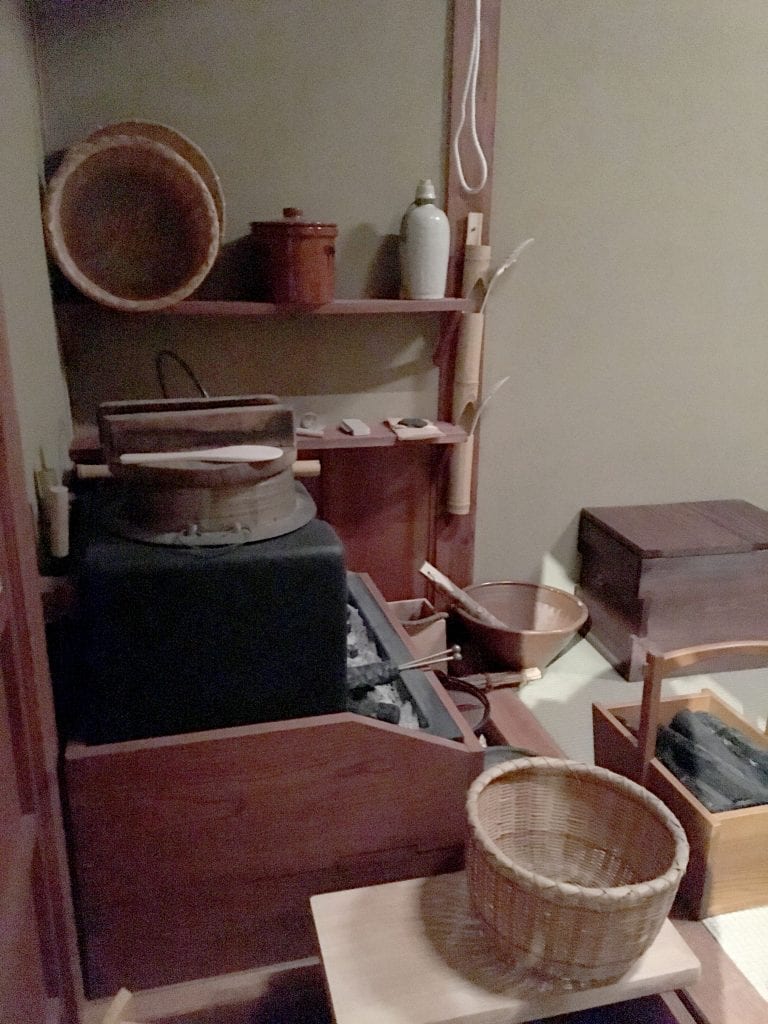
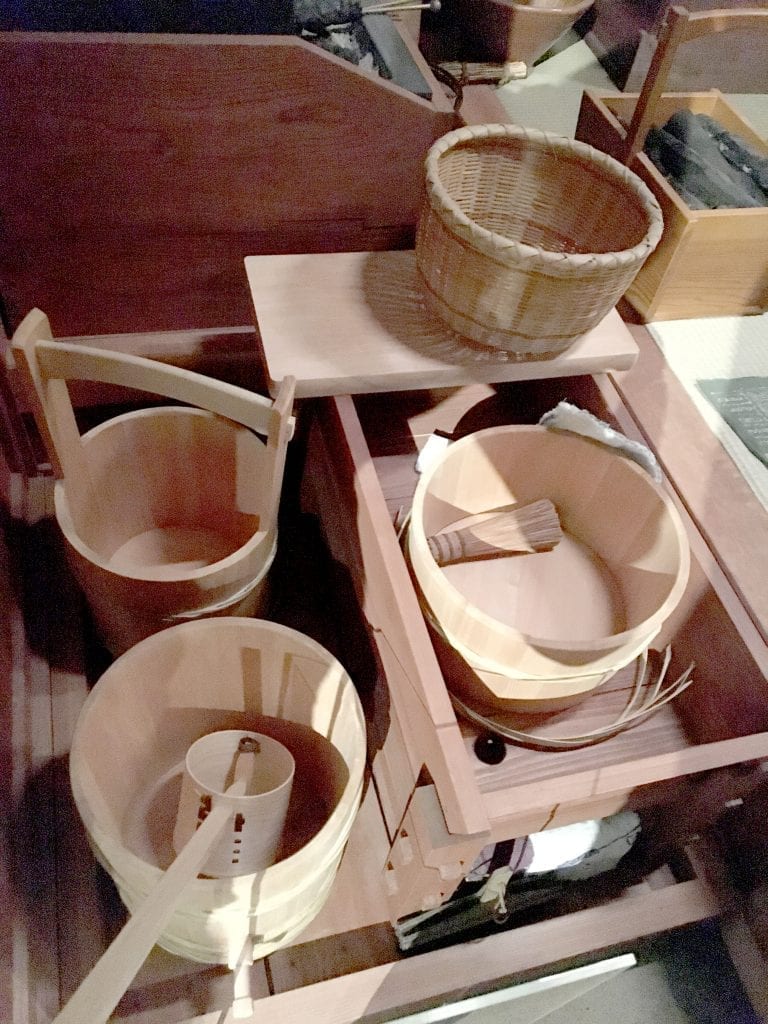
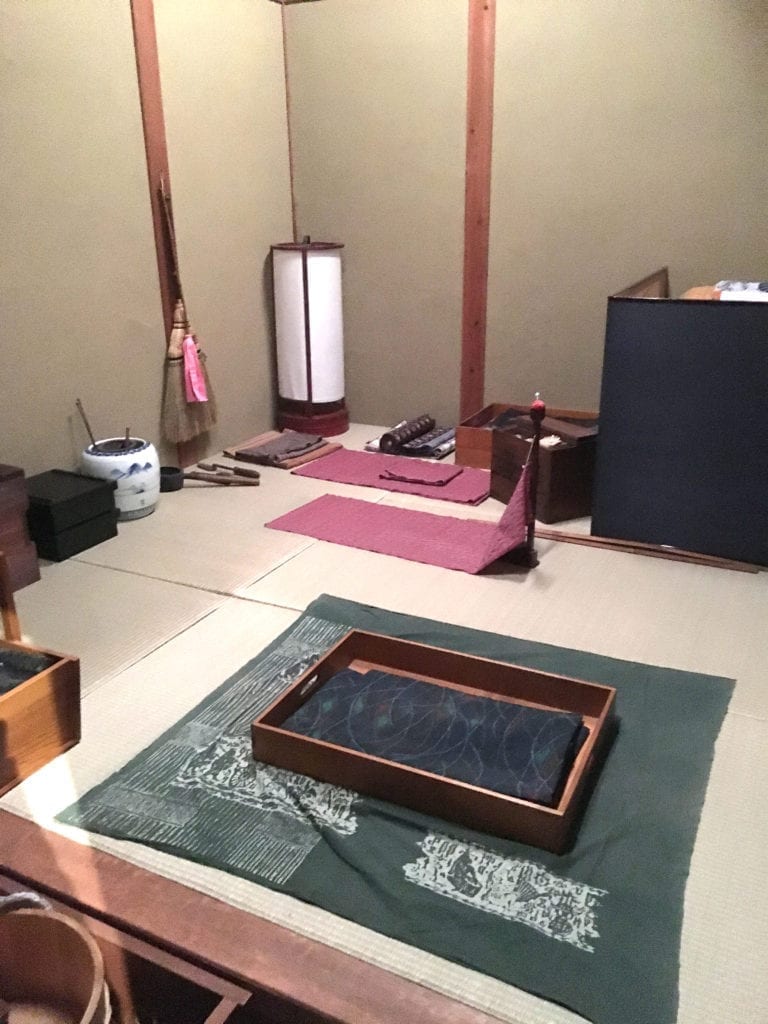

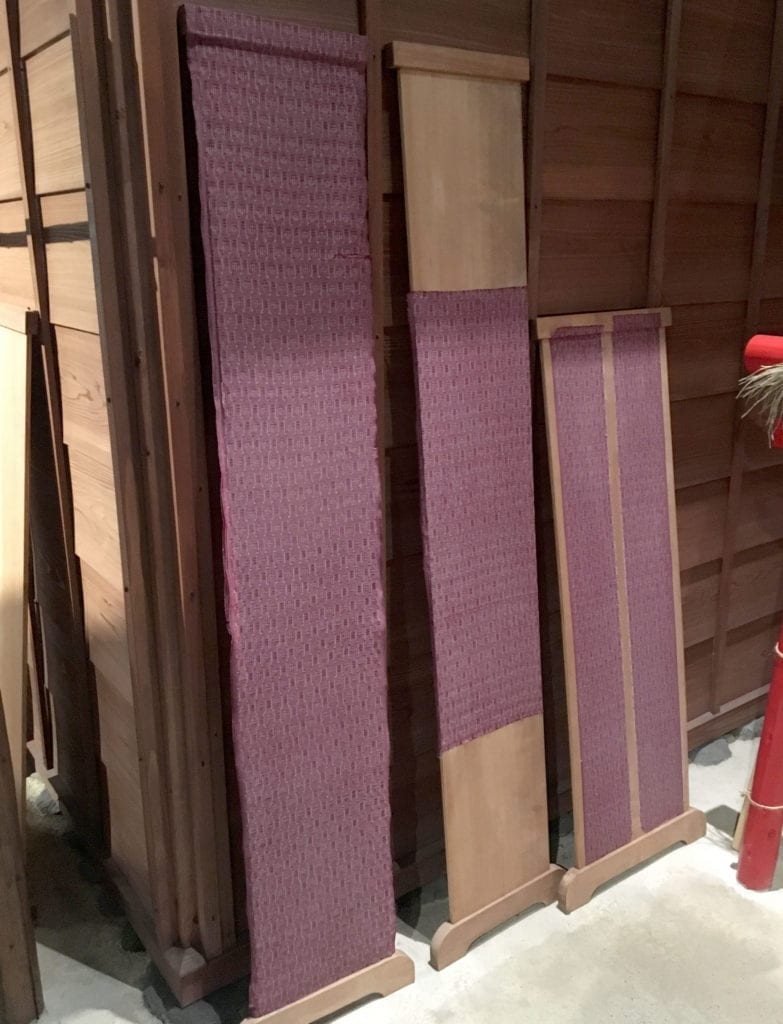

Thanks so much for these wonderful, informative, very interesting emails! Just this weekend, I moved more than 50 cherished kimonos that belonged to my friend’s now deceased wife into a storage unit. I’m going to have to do some research to make sure we’re storing them properly!
Thanks again for the article.
Sandy McGraw
(the person with the disintegrating Catholic Daughters banner)
That’s really interesting that kimonos were traditionally maintained with starch while blocking the cloth across a board. Fashion history is really intriguing. My wife is kind of a Japanophile so I’ve been thinking about getting her a traditional kimono.